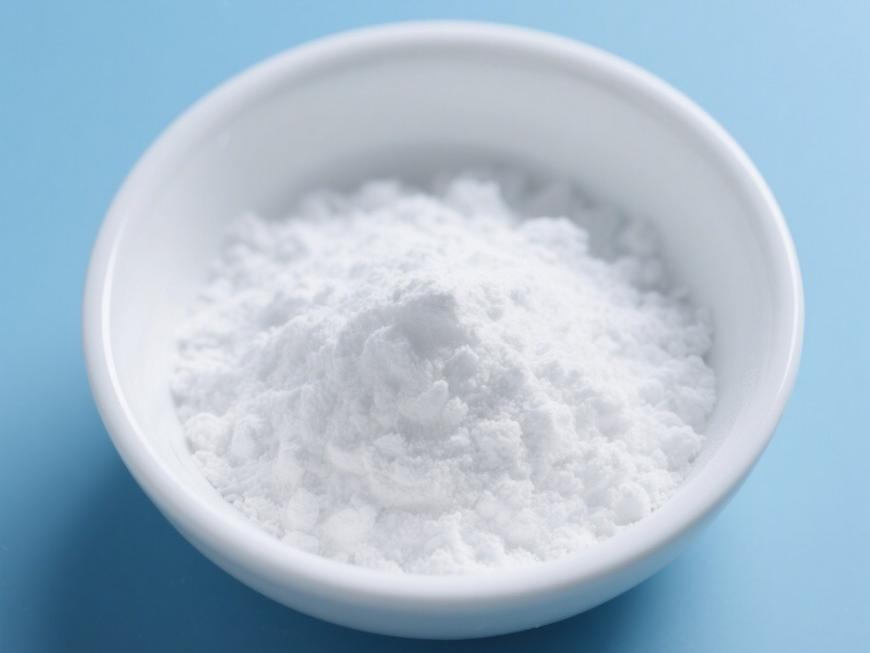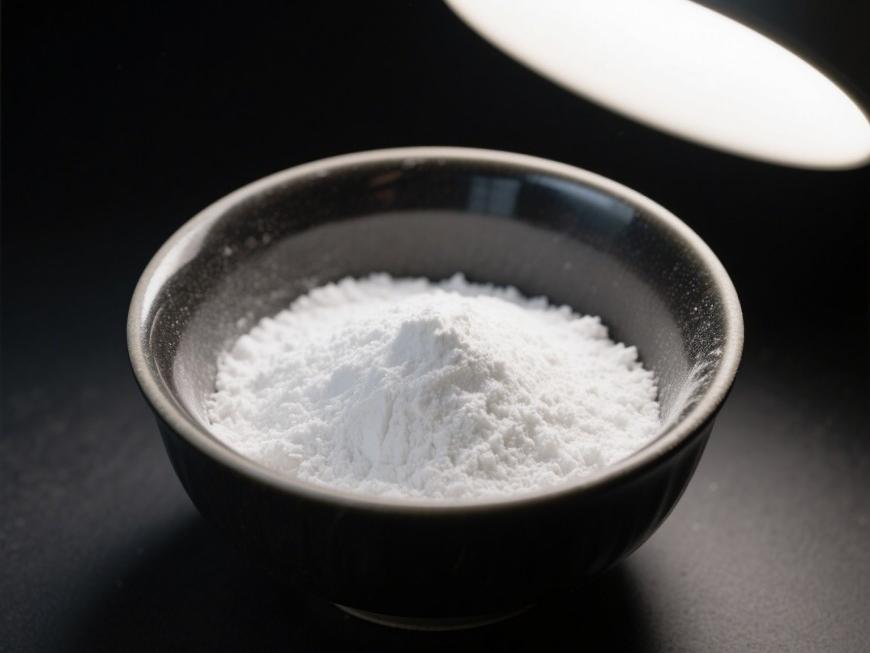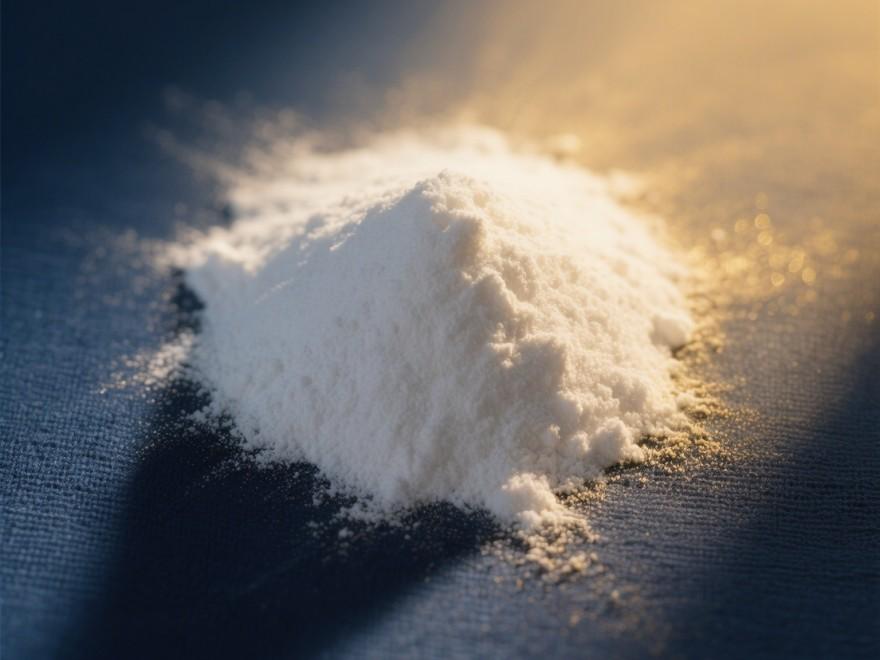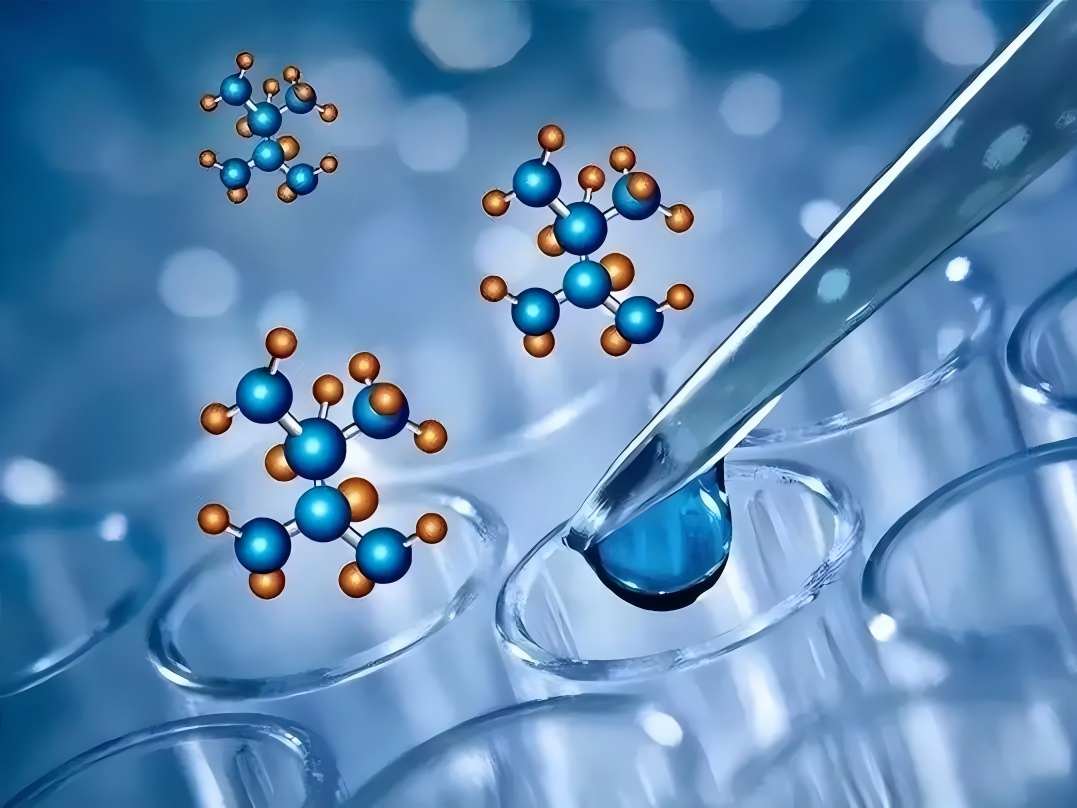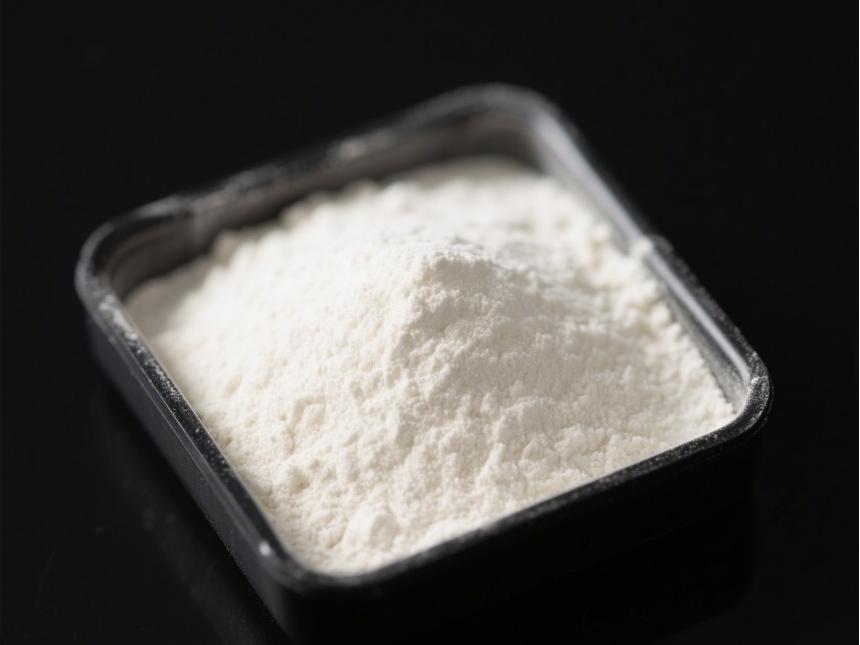Clinical Application Study on D Mannose and Diabetes
Mannose is a monosaccharide involved in protein glycosylation, with the molecular formula C6H12O6. However, mannitol is a relatively inefficient cellular energy source, primarily participating in glycoprotein synthesis and immune regulation. During carbohydrate metabolism, mannitol can be phosphorylated by hexokinase (HK) to form mannitol-6-phosphate (M-6-P). Mannose shares the same transporters as glucose and can be interconverted with glucose in the body [1]. Mannose receptors (MR) are present in many cells, including macrophages and dendritic cells. MR can induce these cells to take up and present antigens [2]. In recent years, with the continuous deepening of research on the intracellular metabolic pathways and biological effects of mannose, it has been discovered that mannose pathway therapy has significant therapeutic effects on various diseases. This study reviews the recent research progress and major discoveries of mannose in tumor, antibacterial, obesity, and immune regulation, analyzes the opportunities and challenges faced by mannose-targeted therapy, and aims to provide new insights and opportunities for clinical treatment.
1 Antitumor Effects of Mannose
1.1 Metabolic Characteristics of Tumors
The sugar metabolism of tumor cells differs significantly from that of normal cells. Even under oxygen-rich conditions, the rate of glycolysis in tumor cells remains far higher than in normal cells, and abnormal sugar metabolism can be considered a triggering factor for tumor development. In normal cells, approximately 90% of energy is supplied through mitochondrial oxidative phosphorylation, while in tumor cells, about 50% of adenosine triphosphate (ATP) is provided by the glycolytic pathway. This glycolytic process under oxygen-sufficient conditions is referred to as aerobic glycolysis [3]. However, the underlying mechanisms behind this phenomenon remain unclear. The prevailing view suggests that mutations in the activity or subtypes of certain glycolytic enzymes are key factors in the abnormal energy metabolism of tumors [4].
Given the characteristics of tumors, such as high glucose uptake, high lactate production, and aerobic glycolysis [5], targeting glucose metabolism has become a hotspot in tumor therapy. Many studies [6–8] have designed glucose transporter 1 (GLUT1) specific small molecule inhibitors to reduce glucose uptake, thereby inhibiting tumor growth. Gonzalez PS et al. [9] found that mannose can interfere with glucose metabolism, reduce glucose uptake by tumor cells, inhibit tumor cell growth, and significantly enhance chemotherapy sensitivity. In this study, five high concentrations of hexoses (glucose, mannose, fucose, galactose, and fructose) were used to culture tumor cells separately. The results showed that 25 mmol/L of mannose significantly inhibited tumor cell growth. When 20% mannitol was added to the drinking water of tumor-bearing mice, and 200 μL of a 20% mannitol solution was administered orally to the mice three times weekly, the growth of tumors and cell proliferation were significantly inhibited. When combined with cisplatin or doxorubicin, mannitol significantly enhances chemotherapy efficacy and prolongs mouse survival. Therefore, mannitol therapy represents a simple and safe new approach to cancer treatment.
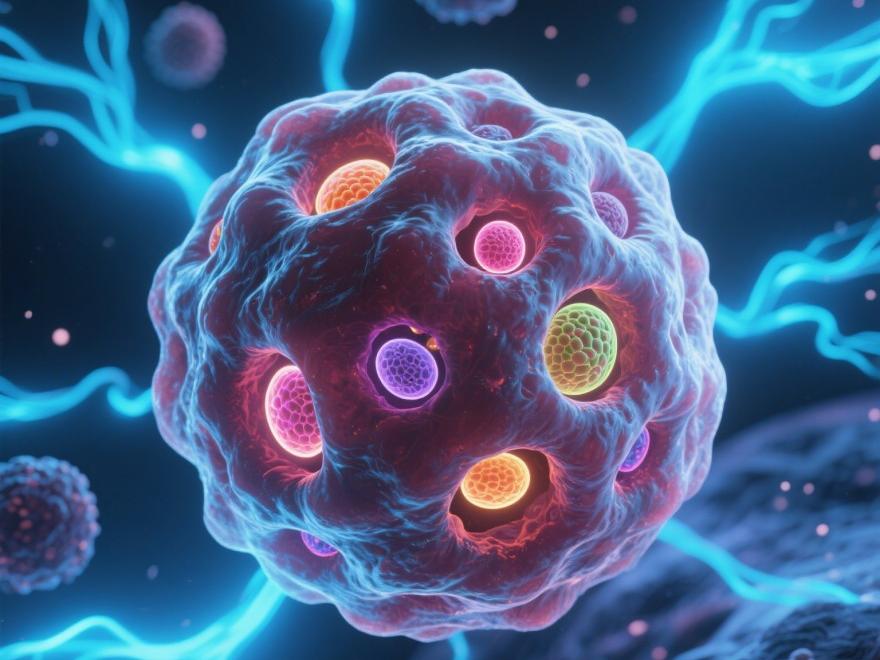
1.2 Mechanism of Action
1.2.1 Interference with Glucose Metabolism
Mannose is an isomer of glucose at the C-2 position, both transported into cells by the same glucose transporter. Therefore, some studies [9] suggested that mannose might inhibit glucose uptake. However, liquid chromatography-mass spectrometry and isotope labeling results showed that glucose intake levels did not decrease, while lactate levels significantly decreased. Study [10] found that mannose is phosphorylated by hexokinase into M-6-P, and mannose-induced M-6-P is more abundant than glucose-induced glucose-6-phosphate (G-6-P). M-6-P, G-6-P, and fructose-6-phosphate (F-6-P) are collectively referred to as hexose phosphates, which collectively participate in metabolism. An increase in any one hexose phosphate inevitably affects the metabolism of other hexose phosphates. The accumulation of M-6-P inhibits glucose metabolism-related enzymes such as hexokinase, phosphoglucose isomerase (PGI), and glucose-6-phosphate dehydrogenase (G-6-PD), thereby affecting the glycolytic pathway, the tricarboxylic acid cycle, the pentose phosphate pathway, and polysaccharide synthesis. DALLE VEDOVE E et al. [11] designed a targeted drug delivery system for mannose and mannose-6-phosphate, which exhibits high endocytosis efficiency and low mutagenicity, enabling direct treatment of cancer cells in conjunction with conventional chemotherapy or gene therapy.
1.2.2 Enhancing Chemotherapy Efficacy
WOJTKOWIAK J W et al. [12] found that mannose significantly reduces lactate production levels, increases tumor cell extracellular pH, weakens drug resistance, and enhances chemotherapy efficacy. More importantly, when combined with chemotherapy drugs, mannitol increases the levels of poly(ADP-ribose) polymerase (PARP), which is an important substrate for caspase-3 and induces apoptosis [13]. Currently, research [14] has utilized this characteristic to conjugate methotrexate (MTX) and mannitol (MAN) into a single molecule, forming an MTX-MAN conjugate. This molecule can directly couple with chemotherapy drugs to form non-irritating, carrier-free nanoparticles (MTX-MAN NPs), emerging as a novel alternative therapy for tumor chemotherapy. MR can induce macrophages and dendritic cells to take up and present antigens.
A study [15] analyzed the relationship between MR expression and clinical pathological characteristics in gastric cancer patients, finding that high MR expression was closely associated with tumor size, TNM staging, and UICC staging (P < 0.05), with high expression indicating poor prognosis in cancer patients. Several studies [16–18] have utilized MR to develop targeted drug delivery systems, by modifying nanodrugs with mannose to target and activate macrophage or dendritic cell immune responses. This approach overcomes issues such as lack of selectivity for tumor cells and cytotoxicity toward healthy tissues in cancer therapy, and enables targeted delivery to specific cell populations, thereby enhancing the pharmacokinetic and pharmacodynamic characteristics of traditional drugs.
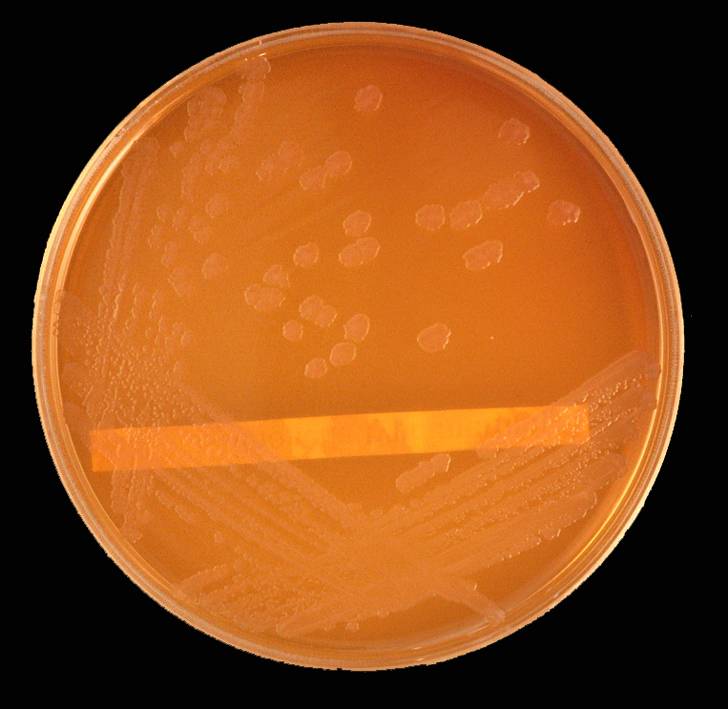
1.3 Clinical Application Prospects
Current studies have shown that mannose is effective in treating pancreatic cancer [19], skin cancer, lung cancer [20], colorectal cancer [21], and gastric cancer. However, research on mannose's antitumor effects remains at the animal experiment stage, and further studies are needed in the laboratory before clinical trials, including analyzing mannose's effects in mice with other types of cancer. For patients, the direct use of mannitol to treat tumors is unlikely; it is more likely to be used as an adjunct to existing therapies, and the effective dose of mannitol remains to be further clarified.
2 Antimicrobial Effects of Mannitol
2.1 Application Scope
The current primary research focus is on the preventive effects of mannose against urinary tract infections (UTIs). Most UTIs are caused by urinary tract pathogenic Escherichia coli (UPEC), which colonize urinary epithelial cells and lead to UTIs[22]. Although antibiotic treatment for UTIs is effective, 30%–50% of patients experience recurrent UTIs.
2.2 Mechanism of Action
SPAULDING C N et al. [23] found that UPEC binds to mannose on the surface of bladder epithelial cells via the type I fimbriae adhesin FimH protein, making it difficult to be flushed out by urine. They modified mannose to obtain mannose glycoside (M4284), which has 100,000 times higher affinity for the FimH protein than mannose, but it does not adhere to the bladder surface and can be excreted from the body with urine. RUSSO E et al. [24] randomly assigned 40 postmenopausal women to an experimental group and a control group. The experimental group received a supplement containing cranberry, D-mannose, and anti-inflammatory factors twice daily for two weeks following anterior vaginal wall suture surgery. while the control group received only surgical treatment. The results showed that oral supplementation improved UTIs in postmenopausal women after anterior vaginal wall suture surgery. MILANDRI R et al. [25] evaluated the therapeutic effects of D-mannose, hibiscus, and plantarum lactobacillus on urinary tract infections following urodynamic testing, The study administered D-mannitol, hibiscus flowers, and plantarum lactobacillus to 100 adult women with urinary tract infections. After 14 days of treatment, only 13% of patients still had detectable urinary tract infections in urine cultures. GENOVESE C et al. [26] divided 72 adult women with uncomplicated cystitis into three groups and administered a combination therapy of D-mannitol combined with three plant extracts. After 12 weeks, microbiological assessment of urine samples compared with baseline measurements revealed that the combination therapy group had a lower incidence of recurrent cystitis during treatment and follow-up. The above study indicates that D-mannose combined with other medications can effectively treat urinary tract infections by eliminating pathogenic bacteria while maintaining the integrity of other microbial communities.
2.3 Clinical Application Prospects
Researchers refer to mannitol glycoside as a “molecular scalpel,” as it can specifically eliminate target bacteria while preserving the integrity of normal microbiota, in stark contrast to the significant changes in bacterial species richness observed after antibiotic treatment. Since mannitol glycoside is not an antibiotic, it can be used to treat UTIs caused by antibiotic-resistant bacterial strains. Additionally, based on its mechanism of action, mannitol glycoside can treat infections caused by different bacterial strains with the same fimbriae. Currently, Feng Feng [27] has developed mannitol glycoside analog antibiotics for potential clinical use in treating urinary tract infections. However, differences in urinary tract structure and lifestyle between mice and humans raise questions about the feasibility of reducing the incidence of UTIs by decreasing the number of pathogenic bacteria in the urethra, which requires further human studies for validation.
3 Mannose and Obesity Improvement
3.1 Mechanism of Action
Mannose is an important monosaccharide involved in protein glycosylation in mammals, but it is actually an inefficient cellular energy source. SHARMA V et al. [28] demonstrated in a diet-induced stress model using C57BL/6J mice that supplementing a high-fat diet with mannose prevented weight gain, reduced obesity and hepatic steatosis, increased endurance and maximal oxygen consumption, and improved glucose tolerance. Mice supplemented with mannitol had higher fecal energy content, indicating reduced host calorie absorption and a tendency to excrete energy. Additionally, mannitol increased the ratio of Bacteroides to Firmicutes in the gut microbiota, a characteristic associated with a lean phenotype. Other studies [29–31] have also reported similar changes in the ratio of Bacteroides to Firmicutes in the intestines of obese mice or humans. YAN S K et al. [32] fed 3-month-old male ICR mice a high-fat and high-fructose diet for 8 weeks, and then administered oral manooligosaccharides (MOS) at doses of 100, 200 mg/(kg·d) for 4 weeks. The results showed that MOS significantly reduced weight gain, insulin resistance, fatty liver, and inflammatory responses in obese mice. MOS also stimulated lipolysis and inhibited fat formation in adipose tissue [33]. Additionally, MOS could rebalance the gut microbiota by increasing the abundance of Bifidobacterium and Lactobacillus [6].
3.2 Clinical Application Prospects
Mannose can prevent weight gain, improve obesity, reduce hepatic steatosis, increase endurance and maximal oxygen consumption, and improve glucose tolerance, making it a potential nutritional supplement for weight management and gut health improvement. Gut microbiota are involved in the process by which mannitol improves obesity, playing an important role in metabolism; however, the specific mechanisms remain to be further investigated.
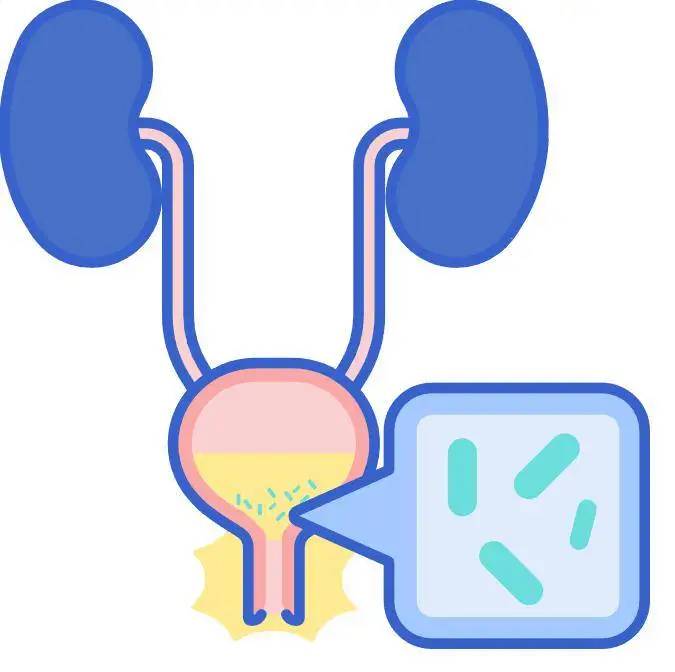
4 Mannitol and Diabetes Treatment
4.1 Application Scope
Type 1 diabetes (T1DM) is a chronic organ-specific autoimmune disease, typically caused by multiple factors leading to destruction of pancreatic β cells [34], resulting in absolute deficiency of endogenous insulin secretion, and classified as insulin-dependent diabetes mellitus. ZHANG D F et al. [35] established a mouse model of T1DM with regulatory T cell (Treg) deficiency. By adding mannose to drinking water, they found that blood glucose levels in the mice could be maintained at normal levels. Studies [36–37] have shown that mannose can treat type 2 diabetes (T2DM) by regulating the gut microbiota and enhancing the hypoglycemic effects of metformin.
4.2 Mechanism of action
ZHANG D F et al. [35] established a Treg-deficient T1DM mouse model, i.e., an adolescent-onset diabetes mouse model, in which mice cannot produce sufficient insulin and develop T1DM due to hyperglycemia at a certain age. When the mice reached 7.5 weeks of age, maltose at a concentration of 20% was added to their drinking water. At this stage, the blood glucose levels of the mice were normal. In the control group without maltose supplementation, 80%–90% of the mice developed diabetes by 23 weeks, while less than 10% of the mice in the experimental group developed diabetes. The results showed that mannitol activated Treg cells in the experimental group, suppressed pancreatic inflammation in mice, but increased the number of pancreatic cells. Mannitol induced T cells to differentiate into Treg cells, thereby reducing damage to immune cells, providing a new approach for the treatment of autoimmune diseases. Ma Shuyue [38] divided non-obese diabetic (NOD) mice into two groups: the control group drank normal water, and the experimental group drank a mannitol solution. The results showed that the experimental group of NOD mice had significantly reduced lymphocyte infiltration in pancreatic islets and markedly alleviated pancreatic inflammation. Shi Xiangling et al. [39] found that mannitol can increase peripheral cell glucose uptake by improving GLUT4 mRNA expression levels.

Obesity and high-fat diets are significantly associated with T2DM and gut microbiota dysbiosis. Due to the many limitations of metformin's first-line clinical application, ZHENG J L et al. [40] conceived and implemented the combination of metformin and MOS. The results showed that the combination of metformin and MOS altered the composition and structure of the gut microbiota by reducing the relative abundance of Ruminococcus and Clostridium species. MOS enhanced the hypoglycemic effect of metformin by regulating the gut microbiota.
4.3 Clinical Application Prospects
Current studies have revealed the regulatory mechanism of mannose on T cells, providing theoretical and animal experimental evidence for the future use of high-dose mannose in the treatment of human diabetes and other autoimmune diseases. However, this study is currently at the animal experiment stage, and its efficacy in humans requires further clinical validation.
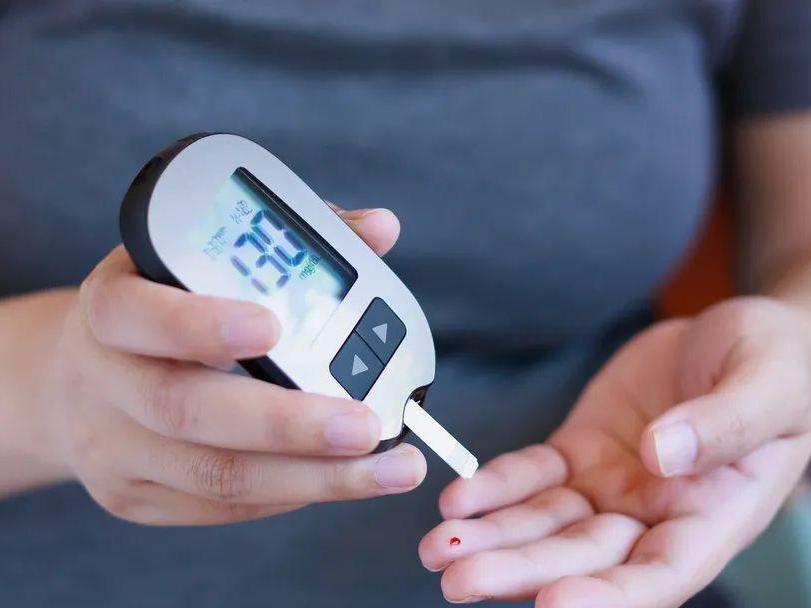
5 Outlook
Mannose plays an important physiological role in the body. By regulating and intervening in mannose metabolism through various means, it can achieve therapeutic effects for corresponding diseases, such as inhibiting tumor cell proliferation, enhancing cancer cells' sensitivity to chemotherapy, serving as a specific target for drug delivery, treating Escherichia coli-induced urinary tract infections, being used for obesity treatment, and acting as an immunomodulator for type 1 diabetes mellitus (T1DM). Additionally, mannitol can serve as an adjunctive drug to enhance the hypoglycemic effects of metformin, thereby more effectively treating T2DM. However, current research on mannitol remains at the experimental stage, and its application in medicine faces numerous challenges, such as the unclear optimal dosage when combined with chemotherapy for cancer treatment; the side effects of mannitol in treating urinary tract infections remain unclear; and the biosafety of this treatment regimen requires further investigation. With further research into the mechanisms of action of mannitol and the conduct of human trials, it is anticipated that mannitol will play a more active role in the clinical treatment of various diseases in the future.
Reference
[1]THORENS B ,MUECKLER M. Glucose transporters in the 21st Century[J]. Am J Physiol Endocrinol Metab ,2010, 298 (2) : E141 -E145 .
[2]ENGERING A J,CELLA M,FLUITSMA D M,et al.Mannose receptor mediated antigen uptake and presentation in human den- dritic cells[J].Adv Exp Med Biol,1997,417 : 183-187.
[3]KOPPENOL W H,BOUNDS P L,DANG C V.Otto Warburg' s contributions to current concepts of cancer metabolism[J]. Nat Rev Cancer,2011,11 (5) : 325-337.
[4]LIANG J,CAO R X,ZHANG Y J,et al.PKM2 dephospho- rylation by Cdc25A promotes the Warburg effect and tumori- genesis[J].Nat Commun,2016,7 : 12431 .
[5] Liu Ge, Song Guanbin. Regulation of glucose metabolism in tumor cells and its implications for tumor therapy [J]. Journal of Biomedical Engineering, 2019, 36(4): 691–695.
[6] Wang Hongshan, Zhang Xiaojuan, Li Heng, et al. Probiotic Effects of Mannan Oligosaccharides on Mice Fed a High-Fat Diet [J]. Food and Fermentation Industry, 2018, 44(11): 63–68.
[7] GAO P, SHEN S, LI X D, et al. Dihydroartemisinin inhibits the proliferation of leukemia cells K562 by suppressing PKM2 and GLUT1-mediated aerobic glycolysis [J]. Drug Design and Development Therapy, 2020, 14: 2091–2100.
[8] Cai Qiumin. Glucose transporter 1 and tumor formation [J]. Chinese Journal of Primary Medicine and Pharmacy, 2008, 15 (3): 517–518.
[9]Gonzalez PS, O'Prey J, Cardacci S, et al. Mannose impairs tumor growth and enhances chemotherapy [J]. Nature, 2018, 563 (7733): 719–723.
[10] Song MM, Chen ZW, Li Y, et al. Research progress on the antitumor effects of mannose [J]. Journal of Tumor Metabolism and Nutrition, 2019, 6 (3): 283–286.
[11]DALLE VEDOVE E,COSTABILE G,MERKEL O M.Man- nose and mannose-6-phosphate receptor-targeted drug delivery systems and their application in cancer therapy[J]. Adv Healthc Mater,2018,7 ( 14) : e1701398 .
[12]WOJTKOWIAK J W,VERDUZCO D,SCHRAMM K J,et al. Drug resistance and cellular adaptation to tumor acidic pH mi- croenvironment[J].Mol Pharm,2011,8 (6) : 2032-2038 .
[13]FISCHER U,JÄNICKE R U,SCHULZE-OSTHOFF K.Many cuts toruin : a comprehensive update of caspase substrates[J]. Cell Death Differ,2003,10(1) : 76-100.
[14]FAN Z X,WANG Y Q,XIANG S J,et al.Dual-self-recognizing,stimulus-responsive and carrier-free methotrexate-mannose conjugate nanoparticles with highly synergistic chemotherapeutic effects[J].J Mater Chem B,2020,8(9) : 1922-1934.
[15]LIU D R , GUAN Q L,GAO M T,et al.Mannose receptor as a potential biomarker for gastric cancer : a pilot study[J].Int J Biol Markers,2017,32(3) : e278 -e283 .
[16]STRASS BURGER D,STERGIOU N,URSCHBACH M,et al. Mannose-decorated multicomponent supramolecular polymers trigger effective uptake into antigen-presenting cells [J]. ChemBioChem,2018,19(9) : 912-916 .
[17]MOVAHEDI K,SCHOONOOGHE S,LAOUI D,et al.Nano- body-based targeting of the macrophage mannose receptor for effective in vivo imaging of tumor-associated macrophages[J]. Cancer Res,2012,72( 16) : 4165-4177 .
[18]DALLE VEDOVE E,COSTABILE G,MERKEL O M.Man- nose and mannose-6-phosphate receptor-targeted drug delivery systems and their application in cancer therapy[J]. Adv Healthc Mater,2018,7 ( 14) : e1701398 .
[19] Chen Zhewen, Shi Hanping, Miao Mingyong, et al. Synergistic inhibition of pancreatic tumor growth by low sugar and mannose [J]. Journal of Tumor Prevention and Treatment, 2020, 47 (5): 319-323.
[20] Li Wuchao, Zhang Ping, Wang Yuan, et al. Preparation of D-mannose-modified scutellaria baicalensis glycoside cationic liposomes and their inhibitory effect on the proliferation of lung cancer A549 cells [J]. Advances in Modern Biomedicine, 2021, 21 (4): 625–628, 658.
[21] Wang Hao, Li Haitao. Inhibition of colorectal cancer occurrence and proliferation by mannose through downregulation of GLUT1 [J]. Food and Fermentation Industry, 2020, 46(10): 53–59.
[22]ZHAO F,YANG H X,BI D Z,et al.A systematic review and meta-analysis of antibiotic resistance patterns,and the correla- tion between biofilm formation with virulence factors in uro- pathogenic E.coli isolated from urinary tract infections[J]. Microb Pathog,2020,144 : 104196.
[23]SPAULDING C N ,KLEIN R D ,RUER S,et al.Selective depletion of uropathogenic E.coli from the gut by a FimH an- tagonist[J].Nature,2017,546(7659) : 528-532 .
[24]RUSSO E ,MONTT GUEVARA M ,GIANNINI A ,et al. Cranberry ,D-mannose and anti-inflammatory agents prevent lower urinary tract symptoms in women undergoing prolapse surgery[J].Climacteric,2020,23 (2) : 201-205 .
[25]MILANDRI R , MALTAGLIATI M,BOCCHIALINI T,et al.Ef- fectiveness of D-mannose,Hibiscus sabdariffa and Lactobacillus plantarum therapy in prevention of infectious events following urodynamic study[J].Urologia,2019,86(3) : 122-125.
[26]GENOVESE C,DAVINELLI S,MANGANO K,et al. Effects of a new combination of plant extracts plus d-mannose for the management of uncomplicated recurrent urinary tract infections[J].J Chemother,2018,30(2) : 107-114 .
[27] Feng, Feng. Research on antibiotics against UPEC-FimH urinary tract infections [D]. Lanzhou: Lanzhou University, 2020.
[28]SHARMA V,SMOLIN J ,NAYAK J,et al.Mannose alters gut microbiome,prevents diet-induced obesity,and improves host metabolism[J]. Cell Rep ,2018 ,24 ( 12 ) : 3087 - 3098 .
[29]ZHAO L ,ZHANG Q ,MA W N ,et al. A combination of quercetin and resveratrol reduces obesity in high-fat diet-fed rats by modulation of gut microbiota[J].Food Funct,2017, 8 ( 12) : 4644-4656 .
[30]HOU Y P,HE Q Q,OUYANG H M,et al.Human gut microbiota associated with obesity in Chinese children and ado- lescents[J].Biomed ResInt,2017,2017 : 7585989 .
[31]LEY R E,TURNBAUGH P J,KLEIN S,et al.Microbial ecology : human gut microbes associated with obesity[J].Na- ture,2006,444(7122) : 1022 -1023 .
[32]YAN S K ,SHI R J ,LI L ,et al. Mannan oligosaccharide suppresses lipid accumulation and appetite in western-diet-in- duced obese mice via reshaping gut microbiome and enhancing short-chain fatty acids production[J]. Mol Nutr Food Res, 2019,63 (23) : e1900521 .
[33]WANG H S,ZHANG X J,WANG S S,et al.Mannan-oligo- saccharide modulates the obesity and gut microbiota in high-fat diet-fed mice[J].Food Funct,2018,9(7) : 3916-3929 .
[34] Zhang, M., Han, Q., Chen, X., et al. Changes in the frequency and function of CD4+ Tregs and CD8+ Tregs in humanized NOD mice and their significance [J]. Journal of Immunology, 2018, 34(1): 19–26.
[35]ZHANG D F ,CHIA C,JIAO X,et al.D-mannose induces regulatory T cells and suppresses immunopathology[J]. Nat Med,2017,23 (9) : 1036 -1045 .
[36]CHEN W,JIN W,HARDEGEN N,et al.Conversion of peripheral CD4 + CD25 -naive T cells to CD4 + CD25 + regulatory T cells by TGF-beta induction of transcription factor Foxp3[J].J Exp Med,2003,198(12) : 1875-1886.
[37] Chen, Haihong. Antidiabetic effects of glucan and exploration of its potential mechanisms [D]. Nanchang: Nanchang University, 2020.
[38] Ma, Shuyue. Regulation of endoplasmic reticulum stress by mannose and alleviation of early pancreatic inflammation in type 1 diabetes [D]. Chongqing: Army Medical University of the People's Liberation Army of China, 2019.
[39] Shi Xiangling, Xia Hui, Xu Dengfeng, et al. Effects of Mannose, a Major Component of Lycium barbarum Polysaccharides, and Its Potential Target Metabolite Inositol on β-TC6 Islet Cells in Mice [J]. Health Research, 2020, 49(3): 458–462.
[40]ZHENG J L,LI H,ZHANG X J,et al.Prebiotic mannan-oligosaccharides augment the hypoglycemic effects of metformin in correlation with modulating gut microbiota[J]. J Agric Food Chem,2018,66(23) : 5821-5831 .


 English
English French
French Spanish
Spanish Russian
Russian Korean
Korean Japanese
Japanese